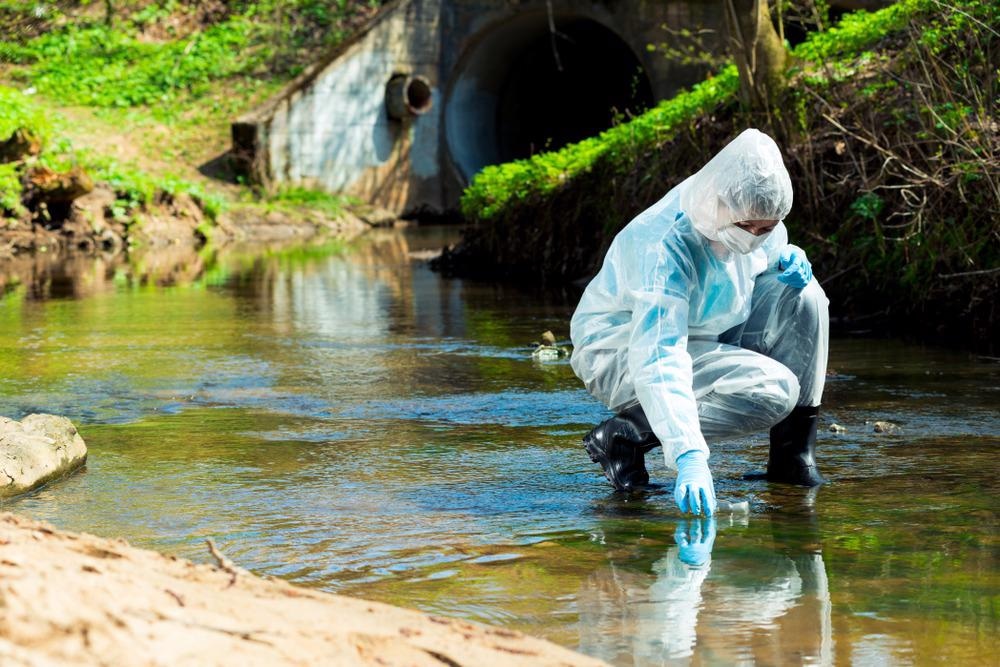The global drug market has been immensely affected by new psychoactive substances (NPS) owing to their rapid spread and increased consumption. Many measures have been adopted to control NPS consumption as a recreational drug. Recently, a new method called improved wastewater analysis (WWA) has been used to analyze psychoactive drugs effectively.

Image Credit: Couperfield/Shutterstock.com
Why is it Important to Monitor Psychoactive Drugs?
Illegal drug trafficking and drug abuse have been a global problem that has negatively affected the social, health, and economic structure of a country. Some of the common illegal drugs, such as amphetamine, methamphetamine, ecstasy, etc., are found in the sewage samples. Researchers have highlighted that the effluents from drug production that are discharged into the surface water may negatively affect aquatic organisms. Therefore, it is extremely important to monitor the trends of drugs and illegal consumption to improve quality of life.
Two of the popular organizations involved in monitoring NPS are United Nations Office on Drugs and Crime (UNODC) and the European Monitoring Centre for Drugs and Drug Addiction (EMCDDA). These organizations have observed that the problems related to drugs are becoming increasingly complex owing to certain factors. Some examples of these factors include the dynamic nature of NPS that are marketed, misused medicines, etc.
Traditional methods to understand drug trends include interviewing the general population and conducting various surveys. However, it has been observed that these methods have failed to provide unbiased insights into the problem. Many new methods are being developed to combat the challenges associated with psychoactive drug monitoring and analysis. Multinational analyses of NPS using innovative methods have provided new insights into the complicated patterns of NPS abuse over time and region.
Brief Overview of Analysis of Wastewater for Psychoactive Drugs
Untreated wastewater samples are obtained from wastewater treatment plants (WWTP) that represent daily composite samples. The samples are preserved using appropriate chemicals and are typically frozen until further analysis. This is the reason why the drug biomarkers are selected such that they are stable under varied conditions.
The samples are subjected to chemical analysis to determine the presence of drug residues or metabolites (drug biomarkers). Analytical tools are used to quantify a specific drug present in the wastewater sample.
Wastewater Analysis of Psychoactive Drug
A new method, namely, sewage-based epidemiology (SBE) has been developed that is capable of accurate estimation of drug concentrations using sewage water samples. More precisely, this analysis is based on quantifying the drug of interest that is excreted through urine and is present in the untreated wastewater samples.
Several psychoactive substances and metabolites of cocaine, heroin, and marijuana are present in human excreta, which are identified and estimated from the wastewater. Some of the examples of metabolites that are commonly quantified are mephedrone (MEPH), ketamine (KET), methamphetamine (METH), 3,4-methylenedioxyamphetamine (MDA), amphetamine (AMPH), 3,4-methylenedioxymethamphetamine (MDEA), and 3,4-methylenedioxymethamphetamine (MDMA, ecstasy).
At present, scientists in various parts of the world such as Italy, Spain, the USA, Australia, the UK, Norway, Croatia, etc., have adopted this method of monitoring drugs, i.e., by analyzing wastewater. The SBE method has been successfully used to monitor local as well as national consumption and gauge the changes in drug trends over time. It has also helped to identify the use of the new designer psychoactive drug. Early identification of the type of illicit drugs and demographics are extremely essential factors to develop strategies to reduce drug abuse and illegal drug trafficking.

Image Credit: kosmos111/Shutterstock.com
Analytical Tools Used to Determine the Presence of Illegal Drugs
One of the common tools used to estimate psychoactive drugs, i.e., identify and quantify the aforementioned metabolites from wastewater samples, is the solid-phase extraction (SPE) coupled with high-performance liquid-chromatography tandem mass spectrometry (HPLC–MS/MS) based procedure. New scientific procedures have been used for freeze-thaw and post-preparative stability to analyze the target drugs or metabolites.
Liquid chromatography coupled with high-resolution mass spectrometry (LC-HRMS) is also used for qualitative and quantitative analysis of psychoactive drugs. However, one of the shortcomings associated with LC-HRMS-based methods is their inherent lower sensitivity compared to LC-MS/MS with triple quadrupole (QqQ). Sensitivity is an important factor for this analysis as the analytes or drugmakers are mostly present in trace amounts.
Analytical Challenges in Estimating Psychoactive Drugs in Wastewater
Although the determination of illicit drugs from wastewater is an accurate method, it could be a challenging task. One of the analytical challenges includes the lack of or scarce availability of standard reference materials, particularly for NPSs. Another difficulty is the likelihood of co-occurrence of substances with similar physicochemical properties in the sewage water.
Further, it is extremely difficult to standardize the measurement protocols owing to the differential size of sewage treatment plants and changing weather conditions. It is difficult to determine a drug biomarker for accurate detection, identification, and quantification of target compounds. This is because a metabolite, to be recognized as a drug biomarker, must fulfill several criteria; for example, the drug compound must be excreted in the urine, be stable under harsh conditions associated with WWTP, etc.
Continue Reading: Helping Identify Novel Psychoactive Substances
Sources:
- Gent, L. and Paul, R. (2021) The detection of new psychoactive substances in wastewater. A comprehensive review of analytical approaches and global trends. Science of The Total Environment. 776, 146028. https://doi.org/10.1016/j.scitotenv.2021.146028
- Sulej-Suchomska, A.M. et al. (2020) Urban wastewater analysis as an effective tool for monitoring illegal drugs, including new psychoactive substances, in the Eastern European region. Science Report. 10, 4885. https://doi.org/10.1038/s41598-020-61628-5
- PERSPECTIVES ON DRUGS Wastewater analysis and drugs: a European multi-city study. [Online] Available at: https://www.drugsandalcohol.ie/21972/
Further Reading
Last Updated: Apr 4, 2023